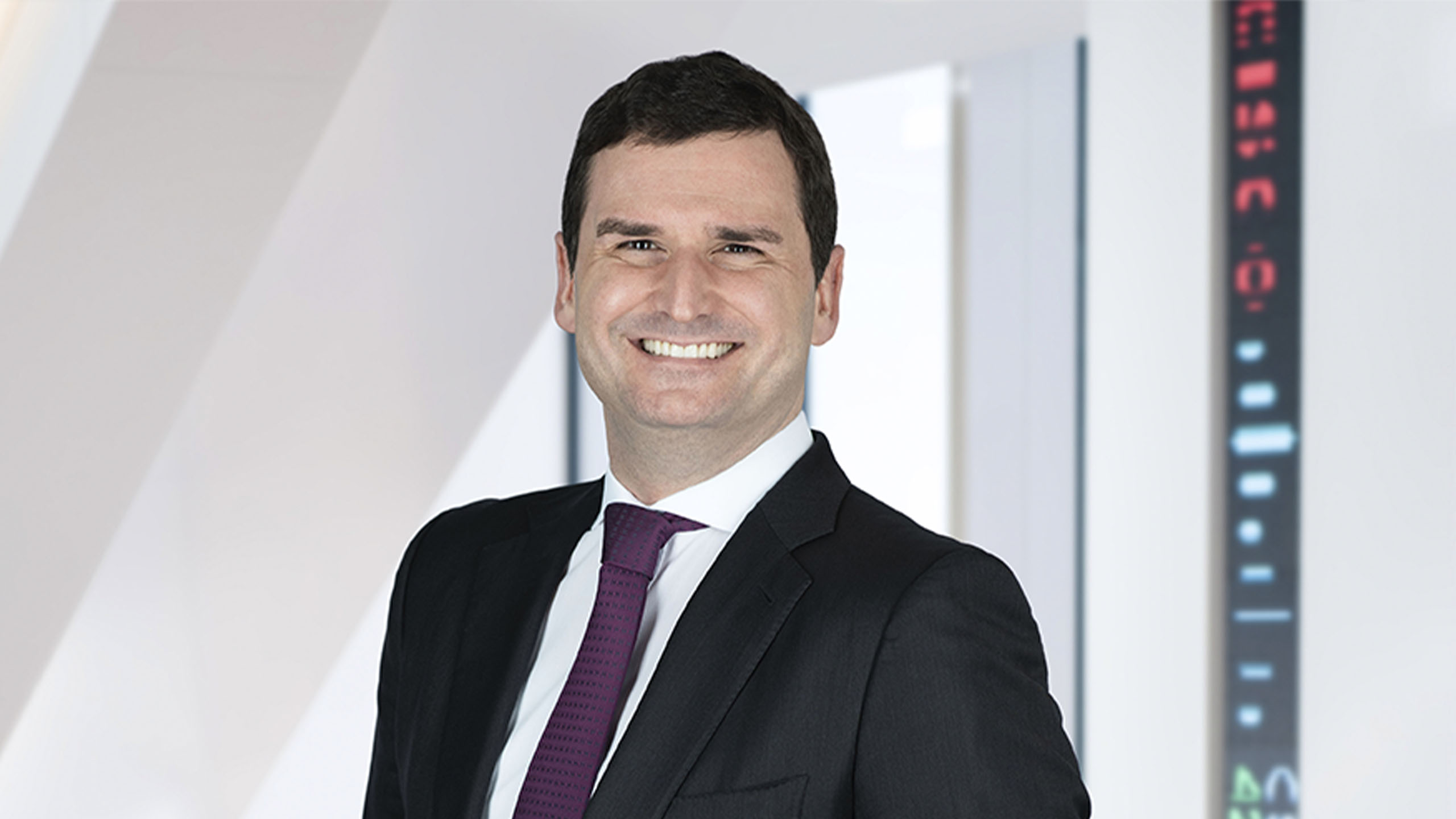
The European Central Bank (ECB) left its policy rate unchanged at 4% in December. As interest rates have presumably reached peak level, the focus has shifted towards when the ECB might start to cut. While recent inflation developments have been encouraging, the market is now fully pricing swift disinflation back to the central bank target, with the first rate cut around March next year.
Although economic momentum in the euro area remains weak and recent inflation prints surprised to the downside, labour markets remain in good shape and the medium-term inflation trajectory uncertain. Underlying inflation is still at 3.6%, well above the 2% headline target. For inflation to evolve in line with ECB projections, growth in unit labour costs needs to falls back to levels consistent with 2% inflation, and firms need to use their profit margins as a buffer to limit the pass-through of the current strong wage increases to consumer prices. More clarity is needed for the ECB to change course.
While the new staff macroeconomic projections include the inaugural estimates for 2026, the ECB has made clear that it aims to achieve its inflation target no later than in 2025. Overall, activity and inflation data have been softening since the last projection round in September, so there have been downward revisions in December. For headline inflation, the projections show the harmonised index of consumer prices (HICP) in 2024 revised down to 2.7%, unchanged at 2.1% in 2025, and at 1.9% from Q1 2026 onwards. President Lagarde stressed that financial conditions are currently easier than embedded in the projections.
The ECB terminated asset purchase programme (APP) reinvestments in July. At its December meeting, the ECB decided to communicate an earlier cutback in pandemic emergency purchase programme (PEPP) reinvestments compared with previous guidance. Full reinvestments will continue until the end of the first half of 2024, 50% reinvestments until the end of the second half of 2024, at which point the ECB intends to discontinue reinvestments altogether.
As for investment implications, while we remain constructive on European duration, the sizeable move lower in yields over the recent weeks leaves us somewhat more neutral tactically. Amidst elevated issuance needs, lowering PEPP reinvestments weakens the relative technical picture for government bonds, and speaks to a continued rebuild of term premia over time. European interest rate swaps should continue to outperform core government bonds, and we expect the back end of interest rate curves to underperform.
Interest rates: Activity is weak but inflation remains above target
While the ECB took note of the recent progress on inflation, President Lagarde refrained from declaring victory early, and highlighted the need to remain attentive to the different forces affecting inflation, and focused on bringing inflation back to target. Instead of providing strong guidance beyond December, the ECB continues to emphasize a data-dependent, meeting-by-meeting approach in an uncertain macroeconomic environment.
Following the meeting, the market is pricing broadly six rate cuts for next year, with cuts starting around March, and a terminal rate of 2% in 2025. We remain skeptical that the ECB will deliver rate cuts so early, with core inflation still elevated and the outlook for medium-term inflation unclear. We believe cuts will more likely begin from June or later in 2024. Indeed, we expect the ECB – mindful that its primary mandate is price stability – will wait for more clarity rather than risk the need to reverse course and resume hiking.
Recent data on eurozone inflation has been encouraging, including the preliminary inflation report for November. Year-over-year, headline inflation fell 0.5 percentage points to 2.4%, and core inflation declined 0.6 percentage points to 3.6%. Both prints were 0.3 percentage points below consensus. Monthly figures can be volatile and the ECB expects inflation to pick up temporarily near term, but recent inflation dynamics have undoubtedly been positive. Having said that, for inflation to durably settle at the 2% target, unit labour costs and firms’ profit margin developments will be key.
While the labour market remains tight, it is starting to show some modest signs of softening. Employment growth has slowed and forward-looking indicators point to further moderation ahead. Some wage indicators suggest that pay pressures have started to ease. While elevated wage agreements concluded in 2023 can be seen in the context of a catch-up from the high inflation last year, a wage growth slowdown remains important. Many countries will not release information about wage settlements for 2024 until next spring.
ECB balance sheet: phasing out PEPP reinvestments
While flexible PEPP reinvestments remain the first line of defense on the anti-fragmentation front, the ECB is aiming for an earlier cutback in PEPP reinvestments as inflation remains above target, policy rates restrictive, and pandemic-related considerations ever less prevalent. The ECB is broadly following the previous APP blueprint, with a partial roll-off before ending reinvestments altogether.
The updated reinvestment guidance has potentially been influenced by the shape of a new operational framework for steering short-term interest rates. The ECB currently aims to conclude this review by spring 2024. Our baseline remains that the ECB will institutionalize the current excess liquidity framework, likely via a demand-driven corridor system where banks have unlimited access to a variety of liquidity operations.
In addition, the ECB is likely to establish a permanent bond portfolio, which could replace the PEPP as the first line of defense over time, essentially a transition towards a structural line of defense. The bond portfolio will probably focus on shorter maturities, exhibit a preference for supranational bonds over national bonds, and could include private sector bonds in addition to sovereign and supranational bonds.

